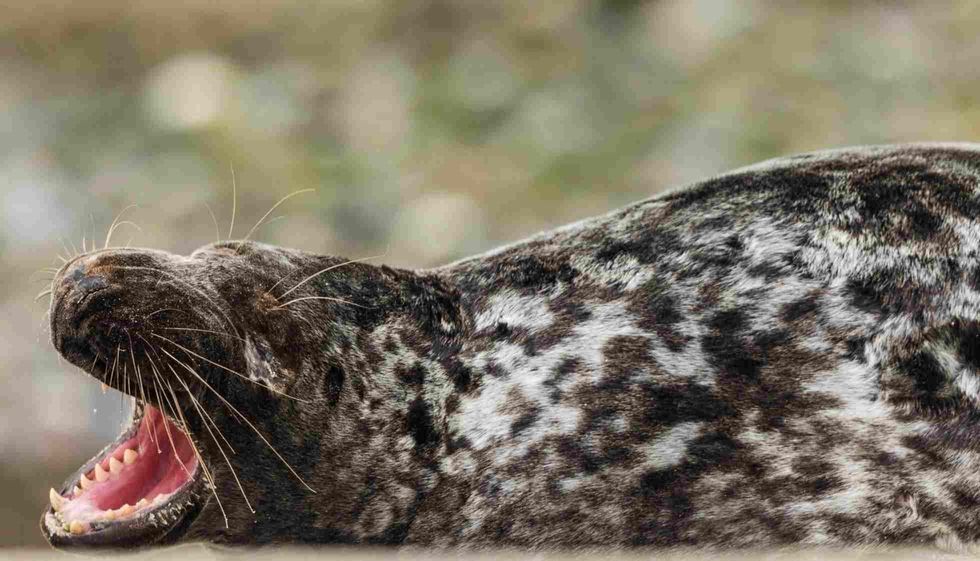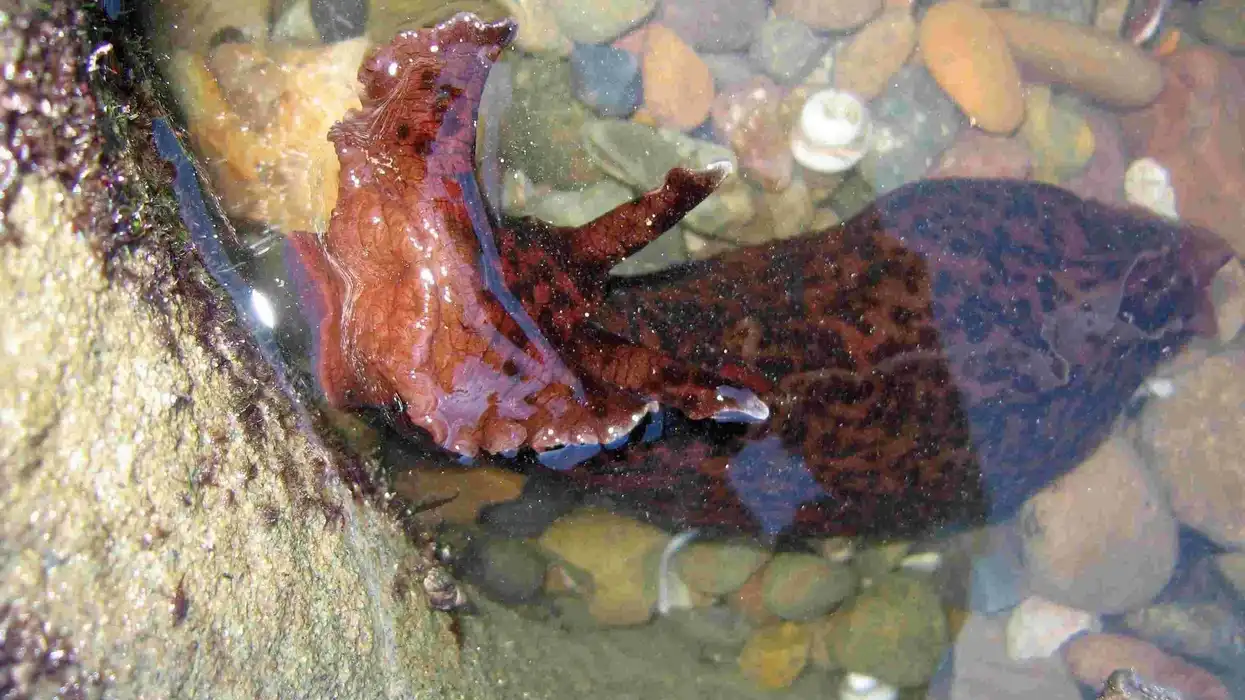The leopard seal (Hydrurga leptonyx) is a species of marine mammals called seals which are commonly found in the pack ice formation of the Antarctic and sub-Antarctic islands.
These Antarctic seals have also been sighted on the coasts of South America, South Africa, New Zealand, and Australia.
The species was named by a French zoologist named Henri Marie Ducrotay de Blainville when they were first discovered in the year 1820. Its characteristic features include its long, bulbous and muscular body with skin covered in distinctive leopard-like spots on the back.
Its reptilian-like face and gigantic jaws render it one of the apex predators in the Antarctic regions making it capable of even killing sharks as well making them the most dangerous seal species in the world.
Leopard seals, though a highly intelligent seal species, are not known to be very sociable and they prefer to hunt alone as solitary animals. Compared to other seals, they are known to be the most aggressive predators of the Antarctic and sub- Antarctic regions.
A leopard seal's main diet includes fish, squid, krill, penguins, and even elephant seal pups occasionally and can live up to 25 years.
Despite being exceptionally adorable, leopard seals are no less dangerous than their feline namesakes. They make formidable foes and fierce hunters underwater looking for their next catch to prey upon.
They are quite loud especially during the summer and usually let out a menacing growl before they attack hence making them as dangerous as the actual land animal that they were initially named after.
They are also very dangerous to humans, unlike some other seal species. Here are some more interesting facts about these magnificent Antarctic animals including leopard seal habitat facts that you would love to know.
Leopard Seal Interesting Facts
What type of animal is a leopard seal?
A leopard seal is a type of seal species that is also referred to as a sea leopard and is the second most commonly found seal in the Antarctic regions.
What class of animal does a leopard seal belong to?
Leopard seals are classified as marine mammals and give birth to approximately one pup every year in the summer.
How many leopard seals are there in the world?
The estimated number of leopard seals ranges from 220,000-440,000 making them fall under the least concerned category of conservation status in the IUCN Red list.
Where does a leopard seal live?
These Antarctic seals mainly inhabit the pack ice and the ice floes on the Antarctic waters. The scientific name Hydrurga leptonyx roughly translates to 'small-clawed water-worker'. They are pagophilic in nature, making them ice-loving seals and the ideal temperature for them is between 50˚S and 80˚S in Antarctica.
What is a leopard seal's habitat?
Leopard seals are marine mammals who live in the Antarctic pack ice formations and frozen islands. They are ice-loving animals and spend most of their time hunting for prey underwater.
Who do leopard seals live with?
Leopard seals are strictly solitary animals who like living alone and hunting alone. They only associate with other seals during mating season.
How long does a leopard seal live?
The average life span of a leopard seal is from 20-26 years in its own habitat.
How do they reproduce?
Leopard seals mostly prefer living and hunting alone. However, they only associate with other seals during the mating season which falls between December to January.
The male leopard seals are known to be polygynous in nature as they mate with more than one female during this season. The females give birth to only one baby leopard seal known as a pup in the summer.
What is their conservation status?
In the IUCN red list, they have been marked under the Least Concern category because of their growing population in Antarctica in the Antarctic regions as they are protected as per the Convention for the Conservation of Antarctic Seals and the Antarctic Treaty.
Leopard Seal Fun Facts
What do leopard seals look like?

Leopard seals are named after their similar distinctive leopard-like black spots on their backs with a coat of dark grey flubber-like skin, gigantic and muscular jaws and reptilian face covered with whiskers. The females are generally larger than the males and they are almost the size of an average walrus.
Unlike sea lions, they have no external ears called pinnae but an external opening for the ear canal.
How cute are they?
Leopard seals are cute and endearing. They have the ends of their mouths curled upwards permanently, making them look as if they are perpetually smiling or grinning which looks outrageously adorable as opposed to actually being such barbaric apex predators that can kill sharks with their massive jaws.
How do they communicate?
Unlike sea lions that are known for their loud barks, leopard seals communicate with vocalizations called "trills" or "hoots". They are known to sing underwater during mating season which mainly consists of short-distance local calls or broadcast calls that reach long distances.
How big is a leopard seal?
The overall adult leopard seal size is around 7.9-11.5 ft (2.4-3.5 m) which makes it as large as an average walrus. Female leopard seals are generally bigger in size reaching the size of nearly 12 ft (3.8 m) as compared to male leopard seals.
How fast can a leopard seal move?
Leopard seals can swim up to 25 mph (40 km/hour) under the sea, which enables them to be able to launch themselves onto the ice from water. They are faster than penguins in water hence making them great hunters in the sea.
How much does a leopard seal weigh?
An adult leopard seal's weight generally reaches up to 440-1,320 lb (200-600 kg) which is half the weight of a walrus despite being of the same length and size. Since female leopard seals are larger, the weight of the females can reach up to 573-1102 lb (260-500 kg).
What are their male and female names of the species?
The male and females do not have any distinctive names to distinguish between the two. They are only categorized as male leopard seals and female leopard seals.
What would you call a baby leopard seal?
Baby leopard seals are called pups like all other baby species of seals.
What do they eat?
Leopard seals mainly prey on underwater fish, squids and krill. Not only are these mammals equipped with massive jaws with pointed teeth to make them highly intelligent and strong predators, but leopard seal teeth are also built in such a way that they can even sieve krill through their teeth.
Their favorite food is nearly all species of penguin and they are also known to eat pups of other species of seal.
Are they dangerous?
Unlike their very adorable and bulbously cute appearance as other seals, leopard seals are known to be the most dangerous species of seals on the planet. Since they are highly solitary mammals, they can be menacing towards humans.
There are two cases of near-death leopard seal and human interactions and one leopard seal fatality that has been recorded to date, hence making them exceedingly dangerous creatures.
Would they make a good pet?
Leopard seals, unlike other sociable species of seals, are exactly the opposite. They are known to be one of the apex predators of sea in Antarctica and can pose a threat of great magnitude if encountered by a human. It is highly unlikely for a leopard seal to be even remotely considered a pet.
Did you know...
After the mating season, pregnant female seals dig holes in the pack ice to make a den which can take up to several months before they go into labor and give birth to a single pup.
The new mother seals take about a month to nurse the newborn pup after delivery. These are special birthing grounds that are specially made by the female leopard seals and are rarely visited by the male seals.
However, many more facts about the leopard seals in their wild natural habitat are still left unknown because of their strictly solitary existence and also because they spend a large part of their time hunting under the sea.
The Leopard Seals Survival Skills
Leopard seals are poor divers despite being formidable hunters in the sea. The longest dive by a leopard seal recorded is 15 minutes only.
They always stay nearby to the open water of the sear and avoid diving longer distances beneath long sheets of continuous ice unlike other species of seals do.
However, they make good swimmers who can swim up to 40 km/h in short bursts which help them catch underwater prey like penguins, fish and krill which mainly consists of a major part of their diet.
The Leopard Seal VS. Other Marine Animals
Leopard seals are known to be the most dangerous species of seal amongst all the others.
However, they are classified as earless seals unlike the others and have more elongated bodies making them the same length as a walrus but half the weight. They are however protected by the Convention for the Conservation of Antarctic Seals and the Antarctic Treaty which prevents humans from hunting them for their coat, unlike the other species of seals.
As opposed to other species of marine mammals who can breathe under the water, they have the least strong lungs which is why they avoid diving much or swimming under continuous stretches of ice and stay close to the open water of the sea.
Here at Kidadl, we have carefully created lots of interesting family-friendly animal facts for everyone to discover! You can even occupy yourself at home by drawing one on our kawaii seal coloring pages.










